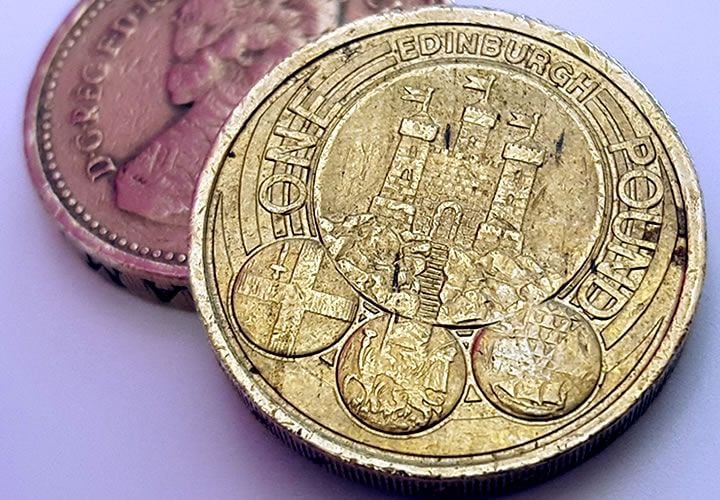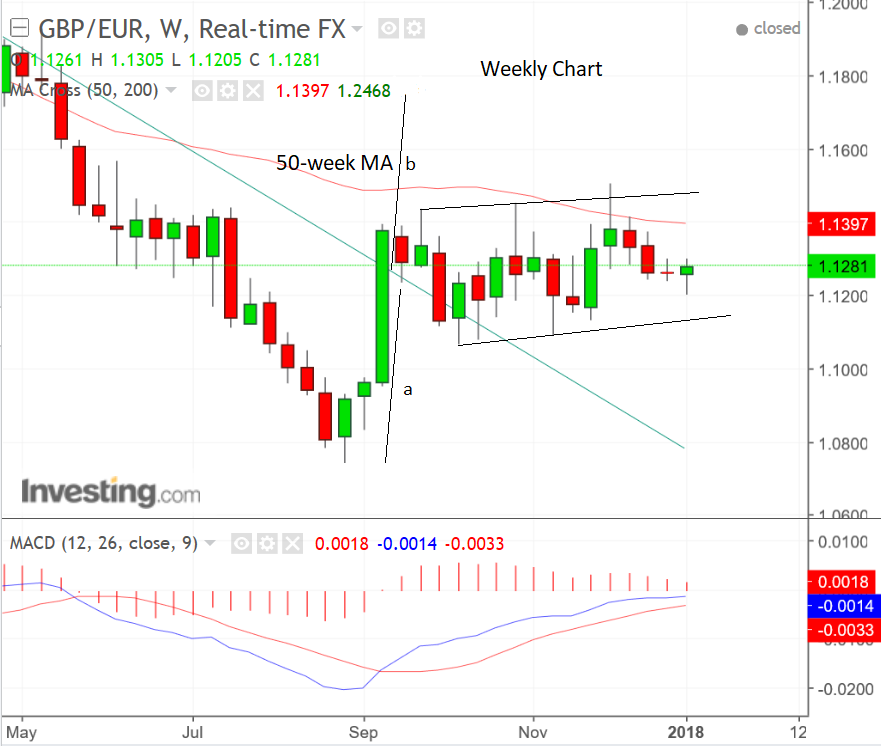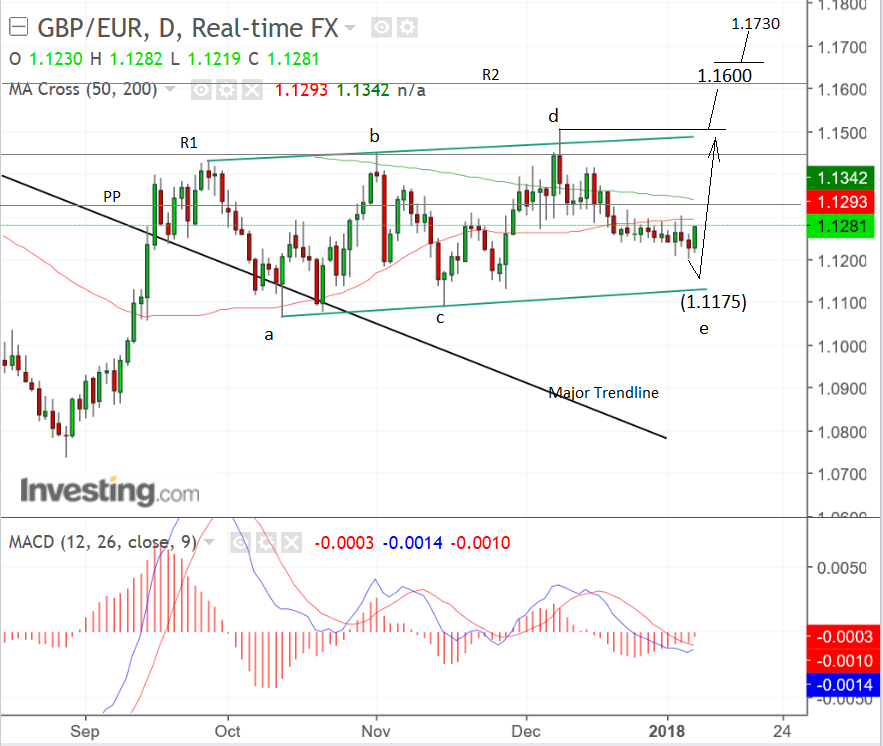Pound-to-Euro Exchange Rate; Forecast, News, and Data for the Coming Week

Next week sees the release of Trade Balance and growth data for the UK, whilst the European Central Bank releases the minutes from its last meeting, providing an insight into when they may end stimulus; technically the pair remains rangebound.
We see no real change to the technical forecast from last week.
The exchange rate has broken above a major trendline drawn from the 2014 peak, which is a very bullish sign.
Normally prices will travel the same distance after a trendline break as they did in the move immediately prior to the break.
In the weekly chart below the move immediately prior to the break has been labeled 'a', and the expected extension 'b'.
As can be seen, the extension is at 1.18 and has yet to fulfill its target.

The daily chart below shows the exchange rate is in a component wave 'e' which is descending to the range lows at around 1.1175.
We don't know whether it will reach them but it may do as it is still in a short-term downtrend.

Consolidation patterns such as this, usually have a minimum of five component waves, which analysts label using letters, so the fact we are in wave 'e' is a sign the pattern could be near completion.
After wave 'e' has finished descending we expect a recovery to take place and the exchange rate to move back up to the range highs at around 1.1500.
We then foresee a breakout higher evolving: we think this because a) the short-term trend immediately prior to the formation of range was up and this marginally advantages an upside breakout, and b) a breakout higher looks like a more natural evolution purely from a visual perspective, whereas a breakdown would just not look right somehow.
Confirmation of an upside breakout would be provided by a break above the December 8 highs at 1.1510 and would lead to an extension up to an initial target at 1.1600, which is just below the R2 monthly pivot.
Monthly pivots tend to exert downward pressure on rising prices due to traders targeting them as levels to short-sell.
A clear break above R2, confirmed by a move above 1.1630, however, would signal a continuation up to a final target at 1.1730, calculated by taking the golden mean (61.8%)of the height of the range and extrapolating it higher - a tried and tested method for establishing a minimum target after a breakout.
Data and Events for the Pound
The week kicks off with the extremely timely, December British Retail Consortium (BRC) Retail Sales figures out at 00.01 GMT on
Tuesday 9, with analysts keen to gauge whether the economic slowdown is worsening or not.
The big day for the Pound, however, is Wednesday, December 10, when Industrial and Manufacturing Production data for
November is out, as well as the Trade Balance and an estimate of GDP.
Industrial Production is forecast to rise 0.4% from 0.0% in October, and Manufacturing production by 0.3% from 0.1% previously; although the data is important, neither of these sectors is very big anymore so only large unexpected shifts are likely to move the Pound.
The trade deficit is forecast to widen in November to -11.0bn from -10.78bn previously, and if it is even wider than expected, then the Pound will weaken as it reflects net demand for the currency from buyers of UK exports.
Finally, The National Institute of Economic and Social Research (NIESR) GDP estimate for the last three months, released at 13.00 GMT on Wednesday, is expected to come out at 0.5%.
Data and Events for the Euro
The market expects positive data for the Euro and the consensus view is that the region is on a strong recovery track - a negative result, therefore, is more likely to cause volatility as it unexpected; for a higher result to cause volatility it will have to be much higher than expected.
The week kicks off with retail sales data for November, out on Monday, January 8, at 10.00 GMT, which is forecast to show a rise of 1.3% from -1.1% previously.
The unemployment rate is out on Tuesday, January 9 at 10.00 and is expected to show a basis point fall to 8.7% from 8.8%.
Industrial Production is out on Thursday at 10.00 and is expected to show a rise of 0.6% in November from 0.2% previously.
The minutes the European Central Bank (ECB) rate meeting will be out at 12.30 on Thursday and are likely to draw attention from investors.
The minutes will reveal the governing council's current thinking on monetary policy and when it is expecting to end QE.
QE is an elaborate form of money-printing used to alleviate crisis-hit economies, which is negative for a currency, so the date when the ECB finally expects to end it is likely to impact on the Euro, with the market currently estimating the end will occur in late 2018.
Get up to 5% more foreign exchange by using a specialist provider by getting closer to the real market rate and avoid the gaping spreads charged by your bank for international payments. Learn more here.




